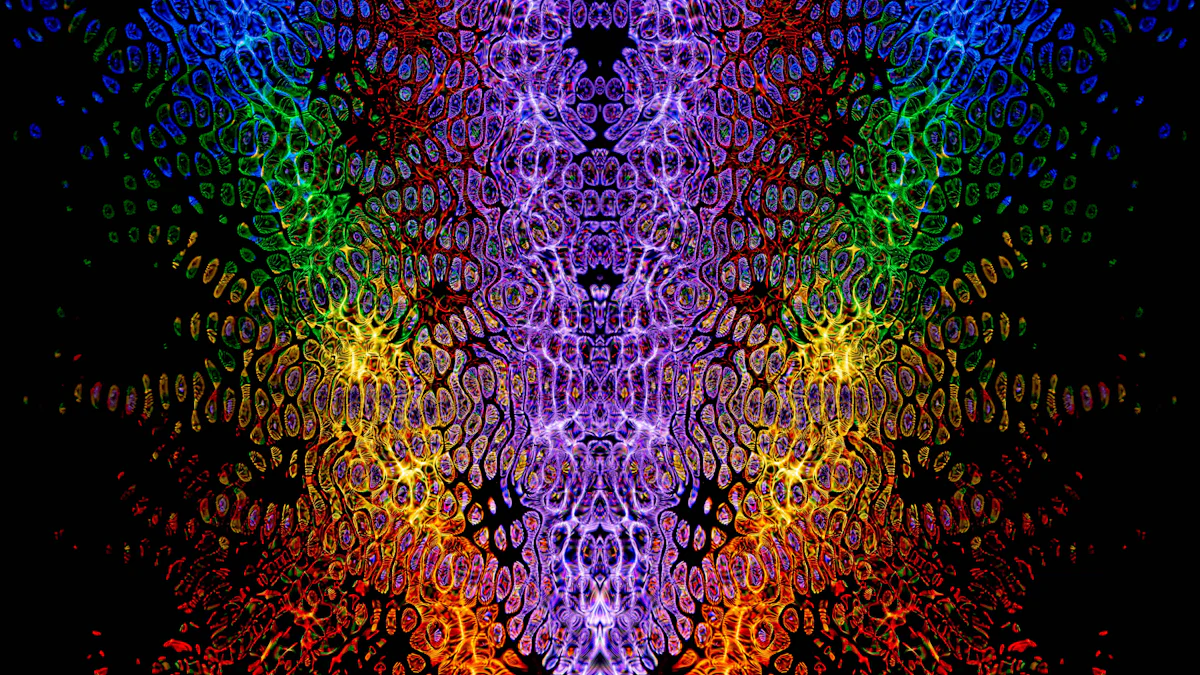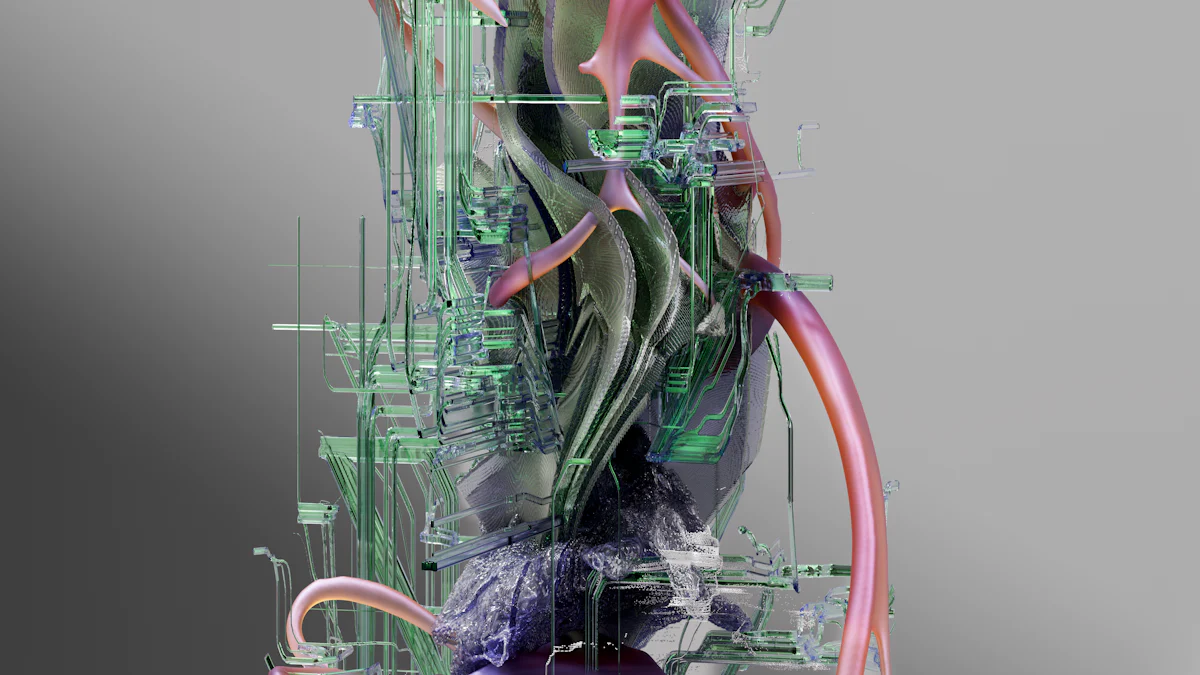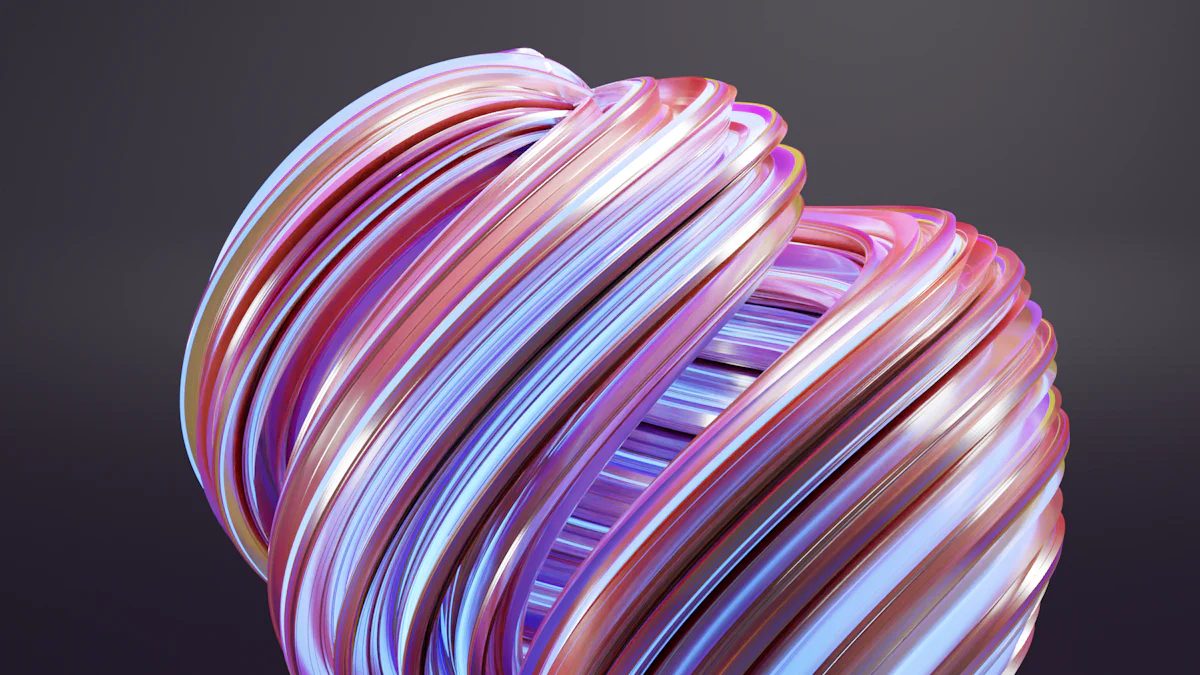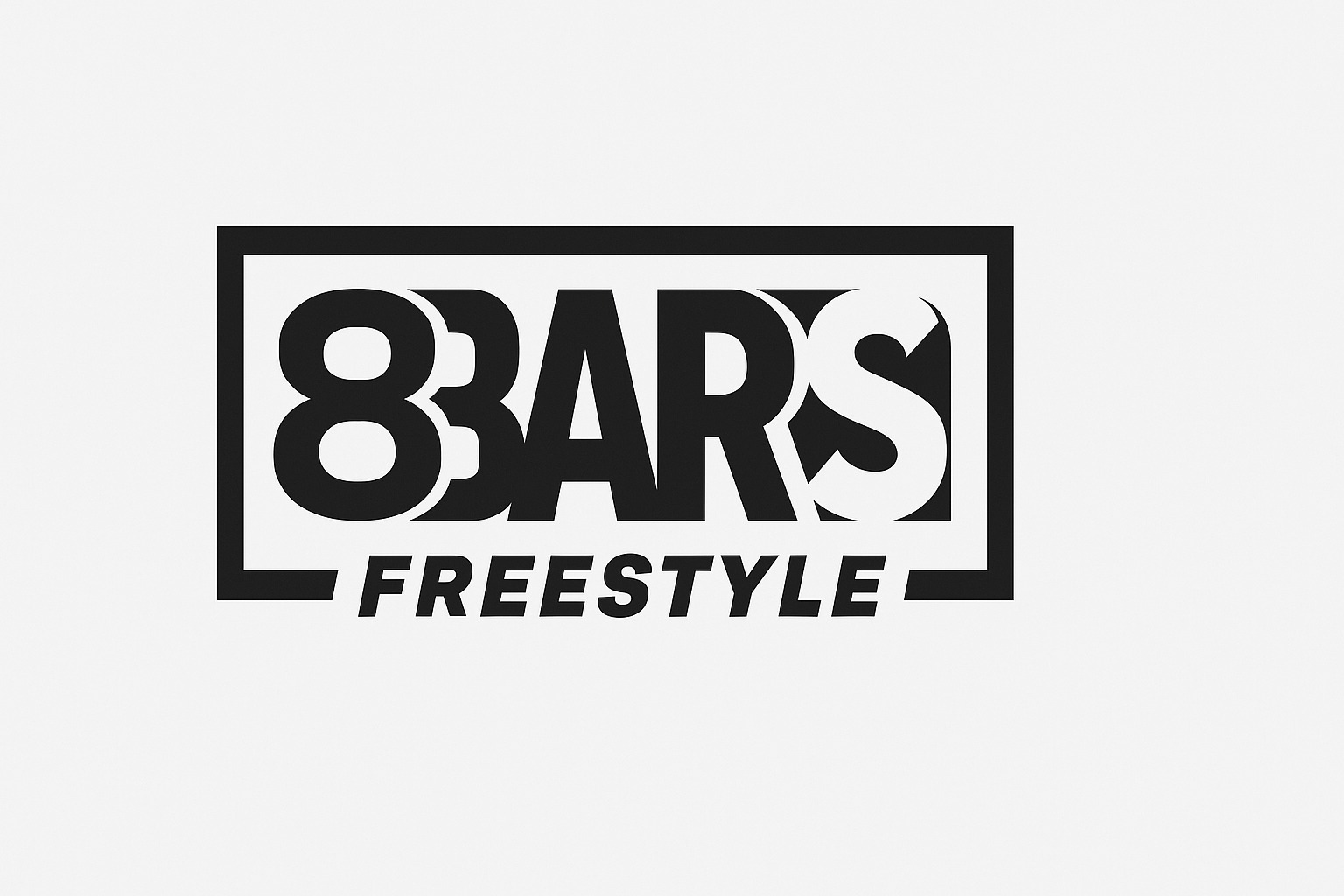Can AI-Generated Art Be Considered Art?

AI-Generated Art is transforming the creative landscape. You might wonder if these digital creations can truly be considered art. This question sparks debates among artists and critics alike. AI tools now assist in music composition and visual arts, making creativity more accessible. For instance, a portrait created by AI sold for $432,500, highlighting its impact. As AI technologies improve, they challenge traditional notions of art. This shift raises questions about the value and authenticity of art in the digital age.
Understanding AI-Generated Art

How AI Art is Created
Algorithms and Techniques
You might wonder how AI-Generated Art comes to life. It all starts with algorithms. These are sets of rules that guide the creation process. Artists use these algorithms to explore new styles and directions. They can generate a wide range of possibilities, allowing you to experiment with different artistic expressions. AI algorithms analyze large data sets, finding complex patterns and suggesting new concepts. This sparks inspiration and helps artists create original content.
Role of Machine Learning
Machine learning plays a crucial role in AI-Generated Art. It enables computers to learn from data and improve over time. When you feed an AI system with thousands of images, it learns to recognize patterns and styles. This learning process allows AI to generate art that mimics human creativity. Machine learning helps AI discover new paradigms, creating art that might not exist otherwise. It opens up endless possibilities for artists to explore.
Types of AI Art
Visual Art
Visual art is one of the most popular forms of AI-Generated Art. You can find AI-created paintings, drawings, and digital illustrations. These artworks often blend traditional techniques with modern technology. AI can generate synthetic faces of people who do not exist, creating unique and intriguing pieces. Artists use AI to push the boundaries of visual art, exploring new styles and concepts.
Music and Literature
AI-Generated Art is not limited to visual creations. It also extends to music and literature. AI can compose music by analyzing existing compositions and creating new melodies. You might listen to AI-generated music that sounds just as captivating as human-composed pieces. In literature, AI can assist in writing stories or poems, offering fresh perspectives and ideas. This technology provides artists with new tools to enhance their creativity and expand the definition of art.
Ethical and Originality Concerns
Ethical Implications
Ownership and Authorship
When you explore AI-Generated Art, questions about ownership and authorship often arise. Who owns the art created by an AI? Is it the programmer, the user, or the AI itself? These questions challenge traditional notions of intellectual property rights. In the world of AI, you must consider how these rights apply when a machine generates art. The lack of clear authorship complicates the legal landscape. You might find that AI-generated works cannot be copyrighted in the same way as human-created art. This ambiguity raises ethical concerns about the recognition and protection of creative works.
Impact on Human Artists
AI-Generated Art also impacts human artists. As AI tools become more prevalent, you might wonder how they affect the art community. Some artists fear that AI could replace human creativity, leading to fewer opportunities for traditional artists. However, others see AI as a tool that can enhance their work. You can use AI to experiment with new styles and techniques, expanding your creative possibilities. The rise of AI art generators like DALL-E and Stable Diffusion stirs ethical debates about the morality of these technologies. You must consider how AI can coexist with human creativity, ensuring that art thrives in this new era of digital expression.
Originality Debate
Creativity vs. Automation
The originality of AI-Generated Art often sparks debate. Can a machine truly create something original, or is it merely automating existing patterns? When you look at AI art, you might notice that it often relies on data from existing artworks. This raises questions about the authenticity of AI creations. Critics argue that true creativity requires a human touch, something AI lacks. However, supporters believe that AI can enhance creativity by providing new tools and perspectives. You can use AI to push the boundaries of what is possible, creating art that challenges traditional definitions.
Influence of Human Input
Human input plays a crucial role in AI-Generated Art. While AI can generate art, it often requires guidance from you, the artist. You decide the parameters, styles, and themes that the AI will explore. This collaboration between human and machine blurs the lines between creativity and automation. You might find that AI serves as a partner in the creative process, rather than a replacement. By combining human intuition with machine learning, you can create art that reflects both human intent and technological innovation.
Comparison Between AI Art and Human Art
Differences in Creation Process
Human Creativity
When you think about human creativity, you often associate it with the unique ability to express emotions, thoughts, and experiences through art. Human artists draw inspiration from their surroundings, emotions, and personal experiences. This process involves intuition, imagination, and a deep connection to the subject matter. You might find that human-created art often carries a personal touch, reflecting the artist's individual style and perspective. This personal connection can make human art resonate deeply with viewers, evoking emotions and sparking conversations.
AI Algorithms
In contrast, AI-Generated Art relies on algorithms and data. These algorithms analyze vast amounts of existing artworks to identify patterns and styles. You might be amazed at how AI can produce visually stunning pieces by mimicking these patterns. However, the creation process lacks the emotional depth and personal touch that human artists bring to their work. AI algorithms follow predefined rules and lack the ability to feel or interpret emotions. As a result, AI-Generated Art often raises questions about authorship and originality, as it is created without the same level of intentionality as human art.
Perception and Value
Emotional Connection
The emotional connection between art and its audience plays a crucial role in how art is perceived. Human art often evokes strong emotions, as it reflects the artist's feelings and experiences. You might find yourself drawn to a painting or sculpture because it resonates with your own emotions or experiences. In contrast, AI-Generated Art may struggle to establish the same emotional connection. While AI can create visually appealing pieces, it lacks the ability to convey the artist's intent or emotions. This absence of emotional depth can impact how AI art is perceived by viewers.
Market Value
Market value is another aspect where AI-Generated Art and human art differ. Human art often holds significant value due to its uniqueness and the reputation of the artist. Collectors and art enthusiasts are willing to pay high prices for original works by renowned artists. On the other hand, AI-Generated Art is often perceived as less valuable due to its ease of creation and proliferation. The ability to generate multiple pieces quickly can diminish the perceived uniqueness and exclusivity of AI art. However, as AI technologies continue to evolve, the market value of AI-Generated Art may change, especially if it gains recognition for its innovative approach and impact on the art world.
Public Opinion on AI-Generated Art
Empirical Data from LinkedIn Poll
Poll Results
You might wonder how people perceive AI-Generated Art. A LinkedIn poll provides some insights. The poll asked participants to distinguish between AI-generated and human-made art. Interestingly, respondents could identify AI-Generated Art correctly about 54% of the time. This result suggests that many people find it challenging to differentiate between art created by humans and machines. The poll highlights the growing sophistication of AI in producing art that closely resembles human creativity.
Analysis of Public Sentiment
Public sentiment towards AI-Generated Art varies widely. Some people appreciate the innovation and creativity that AI brings to the art world. They see AI as a tool that expands artistic possibilities and introduces new forms of expression. Others, however, express concerns about the authenticity and emotional depth of AI-created works. You might find that these individuals value the human touch and intentionality that traditional art offers.
"AI-Generated Art challenges our understanding of creativity," one respondent noted. This sentiment reflects a broader debate about the role of technology in art. While some embrace AI's potential, others worry about its impact on human artists and the art community.
The survey of 504 Yale undergraduates further illustrates these mixed feelings. Many students struggled to tell AI-Generated Art apart from human-made pieces. This difficulty underscores the evolving nature of art and the blurring lines between human and machine creativity. As AI continues to advance, you may see shifts in public opinion, with more people recognizing AI-Generated Art as a legitimate form of artistic expression.
Expert Opinions on AI Art
Perspectives from Art Critics
Supportive Views
Art critics have diverse opinions on AI-Generated Art. Some critics appreciate the innovation and creativity that AI brings to the art world. They see AI as a tool that expands artistic possibilities and introduces new forms of expression. You might find that these supporters believe AI can enhance creativity by providing artists with new tools and perspectives. They argue that AI-Generated Art challenges traditional definitions and encourages artists to explore uncharted territories.
Ebrahimi Afrouzi, an expert in AI Art, states, "AI art is AI art." This perspective suggests that AI-Generated Art holds its own unique place in the art world, distinct from traditional human-created art.
Critical Views
On the other hand, some art critics express concerns about AI-Generated Art. They argue that AI lacks the intentionality and emotional depth that human-created art possesses. You might hear critics say that true art requires a human touch and creative intent, which they believe AI cannot replicate. These critics worry that AI-Generated Art could overshadow human artists, leading to fewer opportunities for traditional art forms.
Cheng, another expert in AI Art, views AI as a tool rather than a replacement. He emphasizes that AI is not advanced enough to push the art field forward without human artistry. Cheng believes that while AI can be useful for creative expression, it should not come at the cost of those who dedicate their lives to honing artistic skills.
Insights from AI Researchers
Technological Advancements
AI researchers play a crucial role in the development of AI-Generated Art. They focus on technological advancements that enable AI to create art. You might be amazed at how AI algorithms analyze vast amounts of data to identify patterns and styles. These advancements allow AI to generate art that closely resembles human creativity. Researchers continue to improve AI technologies, making them more sophisticated and capable of producing visually stunning pieces.
"Artists have the opportunity to use AI to explore new possibilities in their creative process," one researcher notes. This statement highlights the potential for AI to serve as a valuable tool for artists, allowing them to experiment with new styles and techniques.
Future of AI in Art
The future of AI-Generated Art holds exciting possibilities. As AI technologies continue to evolve, you may see shifts in how art is created and perceived. Researchers believe that AI will play an increasingly important role in the art world, offering new tools and perspectives for artists. You might find that AI-Generated Art becomes more integrated with human creativity, leading to innovative and collaborative art forms.
However, the future also presents challenges. Ethical considerations, such as ownership and authorship, remain important topics of discussion. As an artist or enthusiast, you may have questions about how AI can coexist with human creativity. The art community must navigate these challenges to ensure that AI-Generated Art thrives alongside traditional art forms.
Case Studies of AI-Generated Art

Notable AI Artworks
Famous Examples
You might find it fascinating to explore some famous examples of AI-generated art. One notable piece is the Portrait of Edmond de Belamy, created by the Paris-based art collective Obvious. This artwork, generated using a Generative Adversarial Network (GAN), sold for an astonishing $432,500 at auction. Such sales highlight the growing interest and value placed on AI-generated pieces.
Another example is the work of AI artist AICAN, developed by Rutgers University. AICAN's creations have been exhibited in galleries worldwide, showcasing the potential of AI to produce art that resonates with audiences. These examples demonstrate how AI can push the boundaries of traditional art forms, offering new perspectives and styles.
Impact on Art Community
The impact of AI-generated art on the art community is significant. You might notice that AI art challenges conventional notions of creativity and authorship. Artists and critics engage in debates about the role of AI in the creative process. Some view AI as a tool that enhances artistic expression, while others question its authenticity and originality.
AI-generated art also influences the market dynamics. Collectors and galleries increasingly recognize the value of AI art, leading to its inclusion in exhibitions and auctions. This shift reflects a broader acceptance of AI as a legitimate form of artistic expression, encouraging artists to explore new possibilities.
AI Art Competitions
Overview of Events
AI art competitions provide a platform for showcasing the capabilities of AI in the creative field. Events like the RobotArt competition invite artists and technologists to submit AI-generated artworks. These competitions celebrate innovation and creativity, highlighting the diverse applications of AI in art.
You might find that these events attract participants from various backgrounds, including artists, engineers, and researchers. They offer a unique opportunity to explore the intersection of technology and art, fostering collaboration and experimentation.
Reception and Criticism
The reception of AI art competitions varies among audiences. Some people appreciate the creativity and innovation displayed in these events. They see AI as a tool that expands artistic possibilities and introduces new forms of expression. However, others express concerns about the ethical implications and originality of AI-generated works.
Critics often raise questions about authorship and copyright laws. The lack of clear authorship in AI-generated art complicates the legal landscape, challenging traditional notions of intellectual property rights. These discussions highlight the need for ongoing dialogue about the ethical considerations surrounding AI in art.
"AI's evolving role in art sparks debate over creativity and authorship," notes an expert in the field. This statement underscores the complex relationship between technology and art, encouraging you to consider the broader implications of AI-generated art in the creative world.
The Future of AI-Generated Art
Potential Developments
Technological Innovations
AI technologies continue to evolve, offering exciting possibilities for the future of art. You might witness AI tools becoming more sophisticated, enabling artists to explore new creative avenues. These innovations could lead to the development of more advanced algorithms that produce art with greater complexity and detail. AI-driven projects already showcase the vast potential and versatility of these technologies in music composition and visual arts. As AI becomes an integral part of artistic practices, you can expect it to push the boundaries of what is possible in the art world.
Evolving Art Forms
The integration of AI into art is not just about enhancing existing forms but also about creating entirely new ones. You might see AI-generated art evolving into unique styles that blend traditional techniques with cutting-edge technology. This evolution could result in art forms that challenge conventional definitions and offer fresh perspectives. The collaboration between humans and AI in art and design holds immense potential for creativity and innovation. By embracing these new forms, you can expand your understanding of art and its role in society.
Challenges and Opportunities
Ethical Considerations
As AI becomes more prevalent in the art world, ethical considerations come to the forefront. You must grapple with questions about authorship, intellectual property rights, and biases in AI-generated art. The rapid rise of AI art has sparked discussions on evaluating the ethical implications of these powerful technologies. For instance, who owns the rights to an artwork created by an AI? How do you ensure that AI-generated art does not perpetuate existing biases? Addressing these concerns is crucial to ensuring that AI art is both innovative and responsible.
Integration with Human Art
The future of AI-generated art lies in its integration with human creativity. You might find that AI serves as a valuable tool for artists, allowing them to experiment with new styles and techniques. This integration can lead to collaborative art forms that combine human intuition with machine learning. However, you must also consider the potential impact on traditional artists. Will AI replace human creativity, or will it enhance it? By fostering a dialogue between technology and art, you can ensure that AI-generated art complements rather than competes with human creativity.
Philosophical Perspectives on Art
Defining Art in the Modern Age
Historical Context
Art has always been a reflection of its time, evolving alongside human society. Historically, art served as a medium for storytelling, religious expression, and cultural documentation. You can see this in ancient cave paintings, Renaissance masterpieces, and modern abstract works. Each era brought new definitions and purposes for art, shaped by the prevailing cultural and philosophical ideas. The question of what constitutes art has been debated for centuries, with each generation adding its voice to the conversation.
Contemporary Views
In today's world, the definition of art continues to evolve. You might notice that contemporary art often challenges traditional boundaries, incorporating new media and technologies. AI-generated art is a prime example of this evolution. Some argue that art is what we ascribe to it, making it part of an ongoing conversation. This perspective suggests that art is not just about visual appeal but also about cultural significance and the dialogue it provokes. As AI becomes more integrated into artistic practices, you may find yourself questioning the essence of art and its role in society.
The Role of Intent and Emotion
Human Intent
Intent plays a crucial role in the creation of art. When you create art, your intentions guide the process, infusing your work with meaning and purpose. This human element is what many believe distinguishes true art from mere images. Artists bring their lived experiences into their creations, making each piece unique and personal. You might find that this intentionality is what gives art its depth and resonance, allowing it to connect with audiences on a profound level.
Emotional Resonance
Emotion is another key component of art. You often experience art through the emotions it evokes, whether it's joy, sadness, or contemplation. Human-created art has the ability to convey complex emotions and narratives, drawing you into the artist's world. In contrast, AI-generated art raises questions about emotional depth. Can a machine truly capture the nuances of human emotion? While AI can produce visually stunning pieces, some argue that it lacks the emotional resonance that comes from human intent and experience.
"Art is a provocation and part of a conversation," one philosopher notes. This statement highlights the importance of emotion and intent in defining art. As you explore the world of AI-generated art, consider how these elements shape your understanding of creativity and expression.
You have explored the fascinating world of AI-generated art, delving into its creation, ethical implications, and comparison with human art. AI art challenges traditional definitions, sparking debates about creativity and authorship. While AI can produce visually stunning pieces, the essence of art often involves a spiritual and emotional element that AI may lack. The role of human creativity remains vital in defining art. As AI continues to evolve, you should consider integrating it into your practice while maintaining your unique artistic voice. This balance will shape the future of art, ensuring innovation and authenticity coexist.
See Also
Decoding the Power of AI in Art Creation
Will AI Take Over from Human Artists?
The Art Revolution by Generative AI
